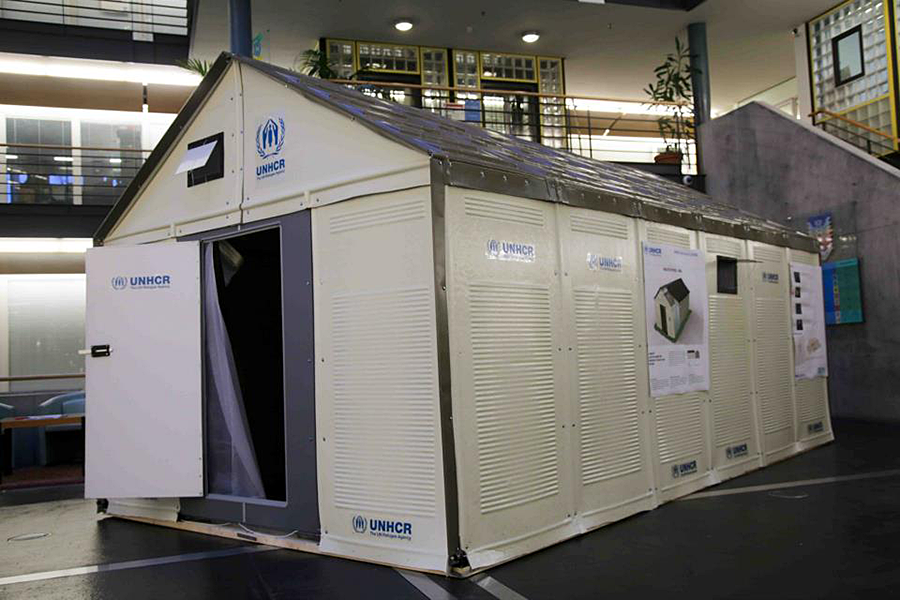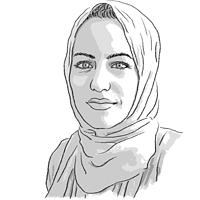IKEA assembles a solution for Syrian refugees
Loading...
The Swedish furniture giant IKEA has a 57-square-foot solution to a giant, global problem: smarter shelters for refugees.
Violence has forced nearly 60 million people from their homes across the world, according to the latest figures from the United Nations High Commissioner for Refugees. As the crisis in Syria has forced 4 million people to seek refuge elsewhere, host countries are scrambling to build refugee camps and shelters as quickly as possible. But refugee shelters have typically been cramped, flimsy, dark tents that blew over, flooded, or simply fell apart after mere months.
Which is why IKEA, known for its simple, inexpensive, well-designed furniture, is getting into the shelter business. Ikea Foundation, the humanitarian arm of the Swedish design conglomerate, has designed temporary homes for refugees around the world – and they're a giant step up from the hot, cramped tents that have become standard in most camps.
Like many of IKEA's offerings, "Better Shelters" arrive in easy-transport flat-pack containers and take 4 to 8 hours to assemble, by hand. They're essentially shipping containers with a lightweight, steel frame, polymer panels, and slanted, 6-foot roofs topped with solar panels. Some offer 57 square feet of living space, while others offer 188 square feet, enough room for a family of five, and nearly double the size of standard tents provided by the UNHCR.
It's the details, however, that make these shelters notable. They come with windows, mosquito nets, lights, ventilation, and a lockable door to keep women and children safe from sexual violence, a common problem in many refugee camps. The houses can also be disassembled and reused when needed. A solar-powered energy system affixed to the roof provides energy for LED lights or for charging a mobile phone.
They cost $1,150, about three times what a UNHCR tent costs, but they're designed to last three years, six times longer than tents, which typically rot or rip within six months.
“The average stay in an UNHCR refugee camp is 17 years,” Johan Karlsson, an industrial designer based in Hallefors, Sweden, who designed the shelters, told Canada's Globe and Mail. “The tents fall apart after a few months so they needed something that was built to last. Our shelters last three years at minimum. Obviously the situation is complex and goes far beyond shelter. This is just a tiny part of humanitarian aid, but it’s an important one when it comes to allowing displaced people to live with dignity.”
IKEA has partnered with the UNHCR, which just ordered 10,000 temporary homes for refugees in countries such as Iraq, Lebanon, Chad, Ethiopia, Greece, Macedonia, Serbia and Hungary.
More recently, IKEA also announced a new initiative to help refugees. Under the "Brighter Lives for Refugees" campaign IKEA will donate $1.06 to the UNHCR for every LED product it sells. The money goes toward providing light and energy to families living in refugee camps.
Together, the campaigns represent a new chapter in a movement to improve life in refugee camps with technology and corporate partnerships.
"In Turkey, refugees use debit cards provided by the World Food Program to shop in stores rather than waiting for food packages," as Slate pointed out in an Oct. article. "In Jordan, refugees get texts from UNHCR when aid money is deposited and then use an iris scanner to withdraw cash at an ATM. Facebook just announced it will bring the Internet to camps around the world."
It's one way to alleviate the refugee crisis, which, increasingly for many Western countries, hits close to home.
As Karlsson pointed out, IKEA's "Better Shelters" were initially designed in Sweden for refugees in distant lands. Today, they're being erected on IKEA's home turf.
“What started as a humanitarian project for people far away in distant, war-torn countries is now right on our doorstep. We are building camps in Germany and Switzerland, even in Sweden.” Mr. Karlsson said, adding that a refugee camp is being planned 65 feet from his office outside of Stockholm. “I could never have imagined it.”








